
© 2010-2025 by Fine Arts of the Southwest, Inc. All rights reserved.
Unauthorized reproduction or use is strictly prohibited by law.
A rare collection of five figural vintage Navajo silver and turquoise “Mother-in-Law” bells, c. 1920’s-1950’s
These are remarkable and rare pieces of Navajo silverwork and Navajo culture whose purpose is deeply rooted in
ancient Navajo mythology. They are not jewelry or adornments or decorative objects in the normal sense, although
they themselves are most beautifully crafted and very finely and carefully decorated silver pieces. These are functional and utilitarian objects made for a specific, strict and culturally fascinating purpose.
In Navajo culture, it has always been strictly taboo for a husband to ever come into direct contact with or be in the
direct company of his Mother-in-Law except under some extremely strict guidelines and procedures. This taboo stems from
an incident which occurred in the ancient Navajo Ceremonial Chant known as “The Flint Way” in which the Hero waits outside while his wives try to persuade their father to receive their earth surface husband; their mother finally believes their petition and offers to depart, thus instituting the Mother-in-Law taboo as a means of showing respect.
-Flint Way Citation Source: “Origin Legend of The Navajo FlintWay”, Father Berard Haile, 2021
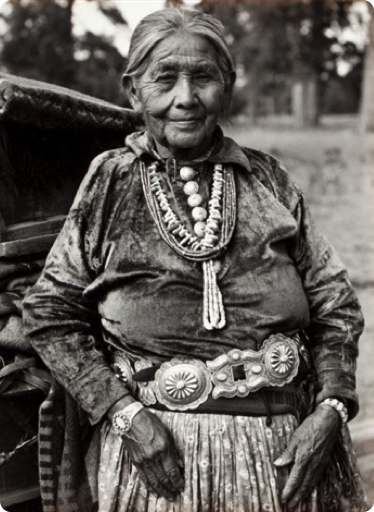
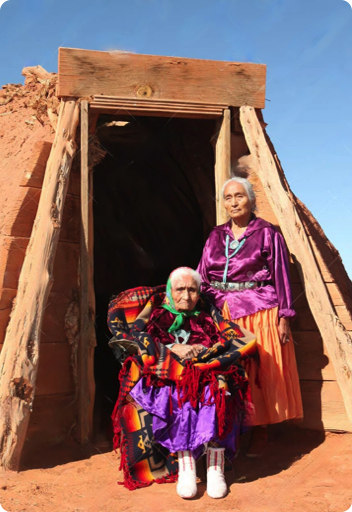
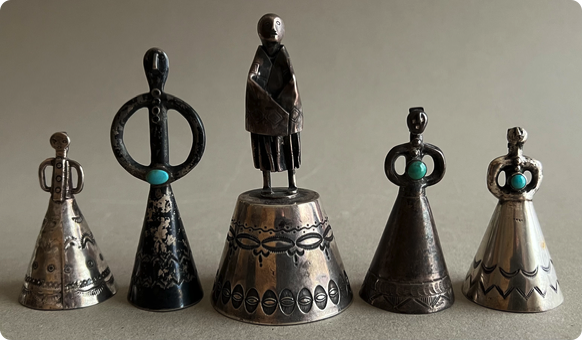
The largest and center figure of this group measures 4" in height. This figure is the newest piece in the collection, c. 1950’s and in addition to being the largest piece in the group it is by far the most detailed in its presentation. The Mother-in-Law figure is wearing a Navajo blanket with traditional designs and is standing in complete relief entirely above the body of the bell whereas all the other earlier figures incorporate the body of the bell into the conical shape of the woman’s dress which is then decorated with fine stamp and chisel work.
Three of the bells have single turquoise stones set in them at waist or chest level on the figures. Viewed from left to right, the five bells measure 2 1/2", 3 3/4", 4", 2 3/4" and 2 1/2" in height. The bells are in generally excellent original vintage condition (All are fully functional as bells and ring nicely.) and particularly so for their 70-100 years or so
of age and use. There is some various age-appropriate abrasion wear in evidence and a scratch or nick here and there.
One of the bells, the second one from left in the photos above, has a considerable amount of dark tarnish built up which could fairly easily be removed, if desired, and all the bells have a nice, mellow patina from age and use. The figures appear to be various combinations of cast and fabricated silver with the upper bodies appearing to mostly be cast silver and the attached skirts below appearing to be fabricated silver.
All in all, this is a remarkable and unique assemblage of rare, beautiful, precious objects made to fulfill a fascinating purpose in a fascinating culture and to do it in beautiful style and artistry, it’s the literal manifestation of the Navajo ideal state of human existence which is, to “Walk in Beauty.”
SOLD
In Modern Navajo culture, this behavior is regularly and often seen. We have personally on more than a few occasions witnessed Navajo families driving in pickup trucks or wagons to do errands, go shopping, travel somewhere or attend events such as rodeos or the annual Gallup, NM Intertribal Indian Ceremonial. The ladies, daughters and Mothers of the family and sometimes the Father, will all ride in the front seat or elsewhere in the interior of the truck or wagon while the husband or husbands, as the case may be, will ride in the back in the outside bed with their backs to the backs of the ladies.
"The three sons-in-law were in a particular class for they could not, like Tuli, Dezba's son, communicate with her directly, but had to learn her wishes through their wives, or through Silversmith, their father-in-law. This was because from time immemorial Navajo women have had the custom of avoiding their son-in-law. They must not "see each other, although each always holds himself in readiness to help the other. The avoidance and helpfulness build up a special kind of respect which is incredibly effective, although the means by which this respect is established often create awkward and amusing situations. However, if any of her sons-in-law had failed to cooperate in the avoidance, of if one had been bold enough to address her or look at her, Dezba would not only have felt deeply hurt, but she would have feared that either she or her insulting son-in-law would become ill or even insane."
-Katherine Spencer, “Navajo Chantway Myths”, 1957, pp. 5-6
These Navajo silver Mother-in-Law bells appear in a number of different formats and sizes, most commonly they are fairly small and somewhat pedestrian in appearance, an inch or a little bigger, and generally rectangular or square in shape and sometimes very simply adorned with stampwork or a turquoise stone, made to simply function as a bell meant to make the necessary sounds to notify Mothers-in-Laws of a husband's impending approach.
In stark contrast, highly figural, fairly-elaborate sculptural pieces like these five examples portraying highly-detailed stylized sculptural and pictorial images of traditional Navajo Mothers-in-Law wearing their distinctive wide skirts, velveteen blouses and their traditional “Tsi-Yeel” tied-up hair buns are unusual and extremely rare and hard to come by. Interestingly, the facial features on all of these figures portray the Mothers-in-Law as looking somewhat stern or angry or, at best, somewhat dour or sour-looking, perhaps that reflects the various Navajo silversmith’s personal attitudes towards their own Mothers-in-Law or just the general feeling that Mothers-in-Law are not particular pleasant people.
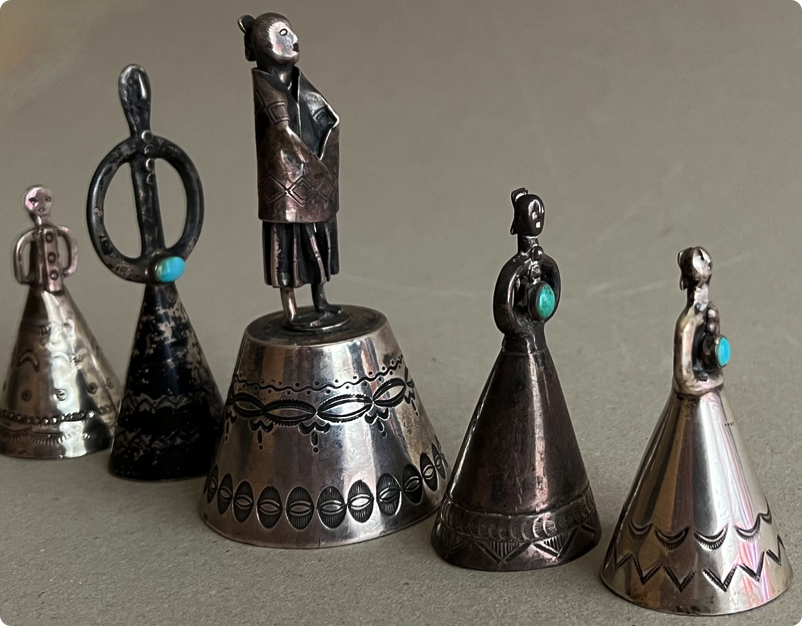
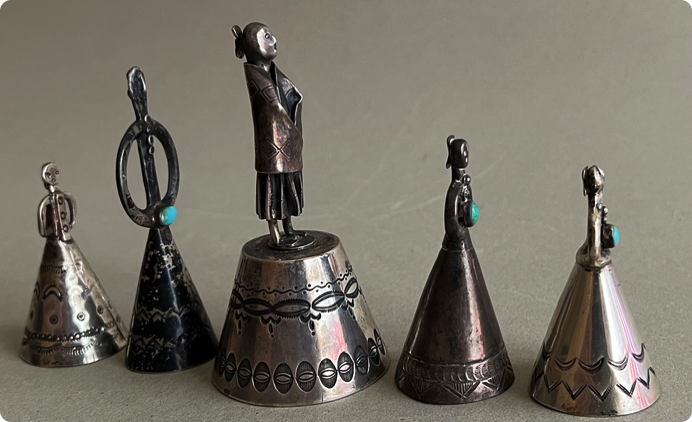
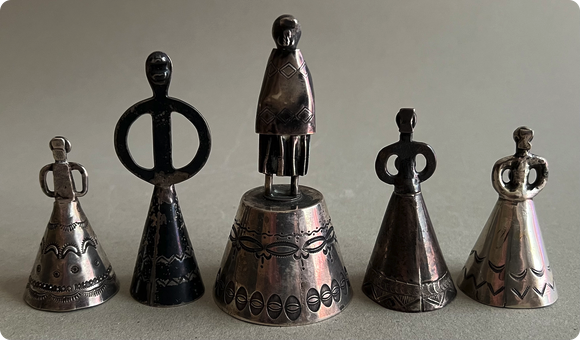
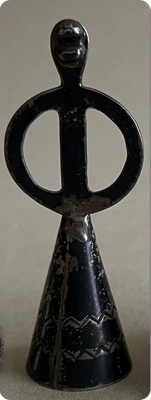
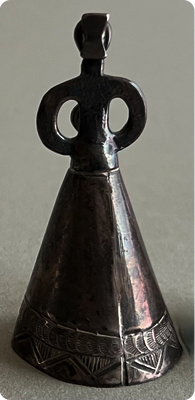
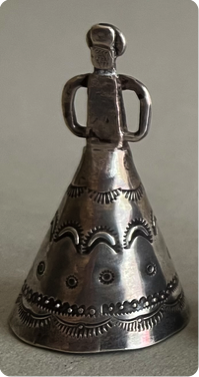
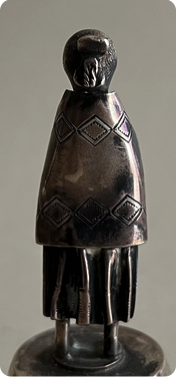
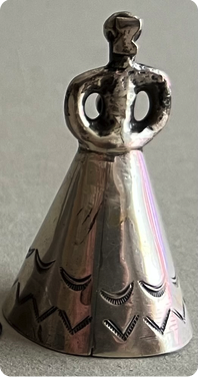
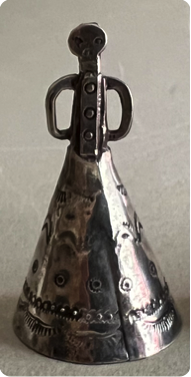
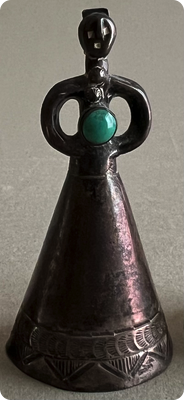
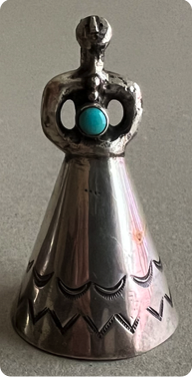
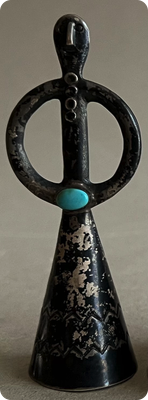
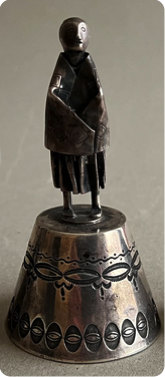
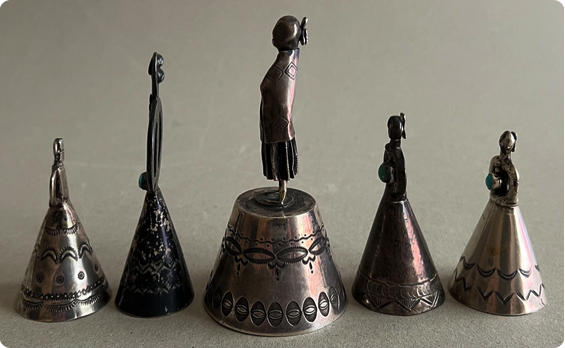
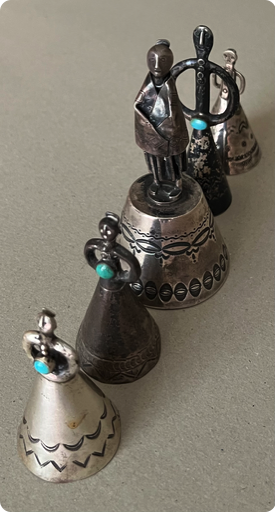
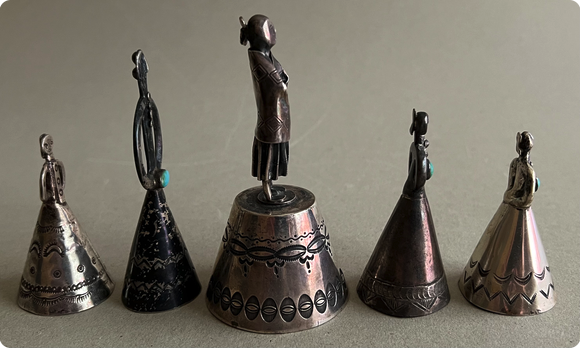
“And they have no interference form their mother-in-laws, called do-yo-ini or she-may-not-be-seen. according to Navajo tradition, if a mother-in-law speaks directly to her son-in-law, she will become blind. She must convey her messages or desires to him through a third party. If it becomes absolutely necessary for her to speak to him, they will have to sit back to back, far apart, with a third person who stands midway between the two and relays the messages back and forth. She may, however, visit the daughter occasionally when her son-in-law is absent from home.”
-Gladys A. Reichard, “Dezba: Woman of the Desert”, 1939, pp. 1179-1810

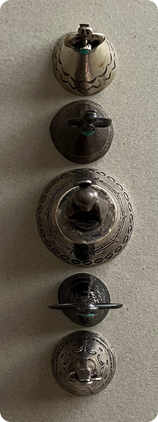
Above left and right, Navajo women in their traditional dress of full skirts, velveteen blouses, silver concho belts, other jewelry and "Tsi-yeel" hairstyles.
Left photo source and © Katrina Brown, dreamstime. Right photo source and © "Navajo Grandmother, 1951" by Laura Gilpin, "An Enduring Grace", Amon Carter Museum, 1986, plate 22.